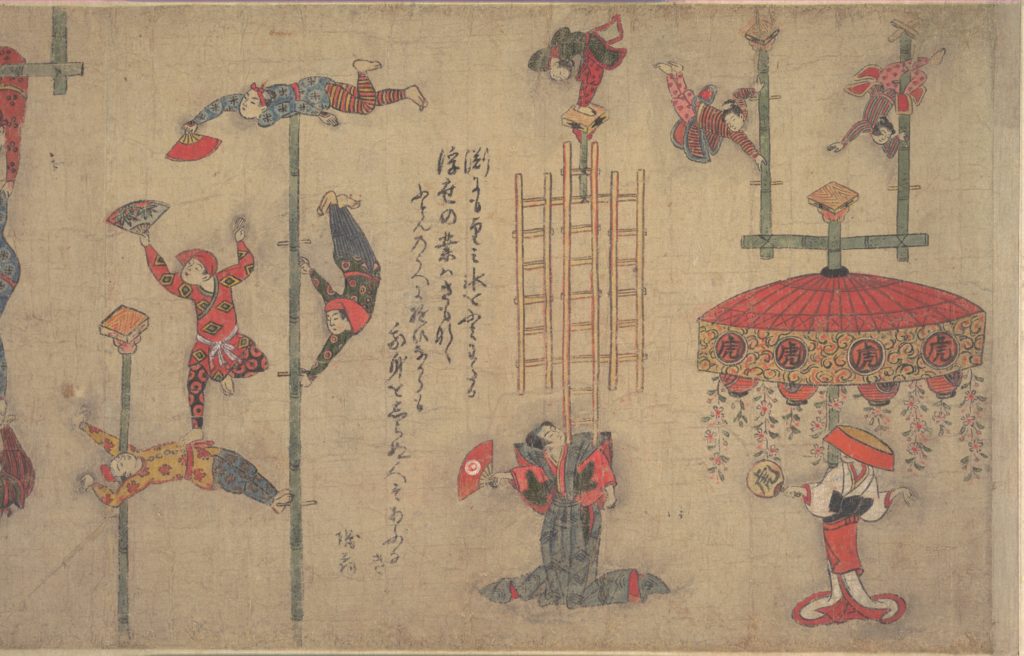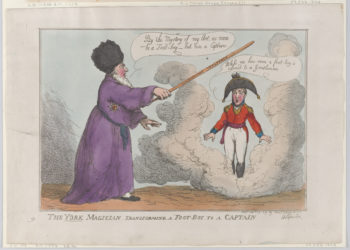As a chronicler of transformative agreements, I keep a close watch on not only the expanding number of libraries seeking and signing such contracts but also the ways that publishers and libraries are using them as a basis to experiment with different strategies for sustainability and open access publishing. I’ve written about their impact on reading access to subscription content and library consortium cohesion and offered reflections on what the path forward requires. I’ve also detailed their variations, from some of the largest of these agreements, such as Wiley/Projekt DEAL and Elsevier/University of California, to innovations such as the SAGE/University of North Carolina-Chapel Hill rebate model.
It will come as no surprise, then, to readers of The Scholarly Kitchen, that my interest was piqued by the announcement of an agreement between NERL and Elsevier that “pilots retroactive open access (OA) for participating institutions’ authors” and that “the retroactive OA pilot program is the first of its kind.” I am grateful to Lindsay Cronk, Assistant Dean, Scholarly Resources and Curation, University of Rochester, and Jessica Morales, Program Director, Collection Strategy and Acquisitions, University of Notre Dame, co-chairs of the NERL Negotiating Team, and Andrew Davis, Vice President, Global Communications, Elsevier for their assistance in unpacking the details of this agreement.

The Deal
NERL is a library consortium consisting of a core group of 30 research intensive institutions in North America as well as more than 110 affiliate member institutions. This new agreement with Elsevier was negotiated as an amendment to the already existing Elsevier/NERL master agreement and then executed with individual NERL member libraries. 13 institutions are participating in this Elsevier agreement: Boston University, Columbia University, Cornell University, Dartmouth, Georgetown University, Johns Hopkins University, New York University, Syracuse University, University of Miami, University of Notre Dame, University of Pennsylvania, University of Rochester, and Yale University.
The core of the agreement is a renewal of subscription access to ScienceDirect, which is Elsevier’s discovery and delivery platform for Elsevier journals and books, as well as some content syndicated from other publishers. The subscription to this content access is paired with a retroactive open access program. In each year of the three-year agreement, five years of content authored by researchers based at NERL institutions is converted from subscription-only access to open access.
The libraries are receiving greater value for lower spend. The value of the agreement is increased over the past agreement through the addition of the retrospective open access pilot, particularly for those libraries at institutions with higher publishing volume. In addition, the first-year price is discounted and coupled with decreased inflationary adjustments over time.
It is worth noting that the agreement does not include any mechanism for prospective open access publishing, which is the typical approach to provisioning open access articles in a transformative agreement, usually through discounted or bulk APC payments. Transformative agreements that support prospective open access publishing are typically called read-and-publish or publish-and-read, depending on the financial structure of the contract. In this case, there is no separate payment for the retrospective open access; the retrospective over access is bundled into the reading fee, in a kind of “free gift with purchase” deal structure.
Executing the Backflip
In each of the three years of the agreement, five years of content are converted to open access from closed status. The specific dates of the backflip coverage for each year are:
- Contract Year 2022 – Eligible Articles from 1994 to 1998
- Contract Year 2023 – Eligible Articles from 1990 to 1993 and 1999
- Contract Year 2024 – Eligible Articles from 1986 to 1989 and 2000
By the end of the three year contract, approximately 76,000 eligible articles from 1986 through 2000 will be open. All of this content was published before the Budapest Open Access Initiative was signed in 2001 and much of it was published only in print initially and would have been digitized later.
The retrospective conversion to open access is being “implemented via a highly customized and largely manual operational process” according to Davis. Elsevier must identify each article with a corresponding author at a participating institution and then convert it to an “Open Archive Article.” Each article is then licensed CC BY-NC-ND; however, there is no rights reversion. The copyright that was transferred to Elsevier is retained by Elsevier.
My spot-checking found that the CC license information is updated on ScienceDirect and that the open status is also reflected in discovery tools such as Dimensions. However, the PDFs have not been regenerated with the CC license (e.g., compare the ScienceDirect record and the PDF for one such article), which may create confusion for readers as well as downstream complications for Article Sharing Framework implementations until the PDFs are updated.
Developing and Monitoring the Agreement
Elsevier and NERL will be working collaboratively to evaluate the impact of the pilot, reflecting the collaborative approach that they took to creating it.
As Davis explained, “From the beginning, we approached the NERL renewal as a collaborative effort and viewed our conversations as a co-creative process. We undoubtedly achieve the most successful outcomes when there is trust, mutual candor and openness about what is most important or what might be more challenging. NERL has been an incredible partner over the years, and we are thrilled to explore new areas and continue building on that partnership.”
Cronk reflected this commitment in characterizing the relationship as “strong” and stating that NERL “was not entering the negotiations in order to walk away” but rather to “show a way forward” that aligns with NERL’s “Preferred Deal Elements for License Negotiations.” This mutual commitment enabled the agreement to be negotiated in under 9 months, without the kind of relationship deterioration we have seen elsewhere.
Initial plans for assessing the impact of the retroactive open access focus on downloads and citations to the open articles. There are also discussions about how to assess researcher response to the pilot and, in particular, to note any response from authors whose work is retroactively opened.
Potential Critiques
It is inevitable that some will argue that these articles are not really open access. The particular CC license is more restrictive than what would be allowed, for example, by Plan S funders under their open access mandates and deviates greatly from the CC BY license that the Budapest Open Access Initiative termed the “optimal license.” Also, Elsevier retains the copyrights to the articles, which is counter to the recent emphasis on rights retention by authors. I raised this with the NERL team. Morales engaged this critique, stating that their focus is on “removing barriers where we can” and that, even acknowledging the limits of the agreement, it is valuable for the public access it does achieve. Cronk concurred saying that she is “pleased to have moved the conversation along” and observed that this sets a new foundation for future conversations.
Some may also be frustrated that this agreement means that Elsevier is able to extract even more value from its subscription content by using it to sweeten and close the deal with NERL and see it as more double-dipping. They would point out that these articles were already sold in print and then sold again when digitized, electrically licensed, and included in backfile and post-termination rights arrangements. Given the alternative, however, in which the articles continue to be paywalled and only accessed by those who can afford to subscribe, NERL’s strategy here – to open them via a “free with purchase” component of the agreement – can be seen as reflecting the ethos of subscribe to open, through which actions by individual actors create open benefit for the collective.
Potential Expansion?
NERL is currently in negotiations with other publishers with more coming on the horizon. While Elsevier agreed to the pilot, two others previously refused. Whether additional publishers will be willing to entertain similar terms for retroactive open access pilots or if they will decline is unknown; however, NERL will be asking, per the “Open Access” Category of the Preferred Deal Elements.
Whether other customers will raise this same ask with Elsevier is also unknown. According to Davis, Elsevier is “focused on listening to the unique needs and goals of our customers.” This pilot responds to the objective of “increasing the openness of NERL backfile content, speaking directly to one of NERL’s core values around equity and reflecting Elsevier’s willingness to pilot new ways of supporting openness.”
Discussion
9 Thoughts on "Retroactively Open: Elsevier Backflips for NERL Agreement"
Interesting. Usually green open access is sold as the only solution to the backfile problem, which is to say that there is no solution to opening backfiles. This is clearly the right way, where the rights holder makes the work freely available. The restrictive CCL also seems appropriate. We have no way of knowing that authors would have agreed to CC BY in 1995, so it seems fair to go with the CCL closest to the CTA that was actually signed.
Could you say more about why what authors may have agreed to is relevant? Once the copyright is transferred, its the call of the new copyright owner — that’s what the CTA does. Similarly, authors don’t have any say in how much a publisher charges for a copy of an article through, for example, on demand purchase. I don’t think any publisher is thinking “what would authors have wanted us to charge?” and using that as the principle for setting fees? Or, are you just suggesting that this is good practice on more of social grounds rather than legal?
Social grounds, not legal. If you look at the licenses authors choose when left to their own devices, they often do not choose CC BY. So while the rights holder could apply any license and charge any price, the restrictive license is a nice conservative move. It achieves open access in the sense that now anyone can download a copy. But it doesn’t change too much about how the work can actually be used. I seriously doubt academics of today (let alone 1995) care about, say, text and data mining. They care only that other scholars can read and cite their work.
Of course my ideal outcome here would be for authors to be able to choose whatever license they want but I figure that it might not be super practical to do that.
Given these articles were published 1986 through 2000, I suspect many authors are no longer working, possibly no longer alive. So, yeah, checking with them would be a huge lift. And, yes, that would be the critique when people say that CC BY NC ND isn’t really open access — that it doesn’t change too much how the work can actually be used.
A team from the Cal State system and ACM negotiated similar agreement terms back in 2020, but the negotiations were unsuccessful because of several perceived obstacles, namely that: 1) a disparity existed in the backfiles between ACM-owned copyright and author-retained copyright, 2) retrospective author agreements were not all digitized and easily accessible; 3) licenses would need to be indicated in the articles themselves, and generating new pdfs of the version of record would be inherently problematic. It’s heartening to see that these potential obstacles were overcome or sidestepped in the negotiations between NERL and Elsevier. Were these obstacles part of the negotiations?
In any case, I hope this sets the stage for many future transformative agreements that are dual prospective and retrospective open access. Perhaps longer term commitments (5-10 years) would be fitting in these cases, establishing long-term, predictable, and sustainable budgets for both parties and smoothing the transition to all journal content being OA.
Why hasn’t Elsevier opened up all backfile content instead of just content authored by consortia members? This seems like a goofy idea, once again using carrots to influence librarians who should be demanding the whole chef salad rather than just a couple of individual veggies.
I suppose the simple answer is that Elsevier is a business, and access to back content is something they can sell, so giving it away without receiving anything in return would work against their raison d’etre.
Many of these same institutions purchased a number of the Elsevier backfiles a decade or two ago. Being the NERL director (based at Yale University) I helped to facilitate those purchase “deals,” though I no longer remember what was purchased by which institution. Thus, one could say that Elsevier was likely paid by NERL libraries for those backfiles some time ago. This new arrangement may not help a lot of the NERL libraries with backfile access, but, more altruistically, it’ll open up the NERL-institution authored articles to the rest of the world.
Yes, exactly Ann, this is about creating access to NERL authored content for others who haven’t previously licensed the backfile.



